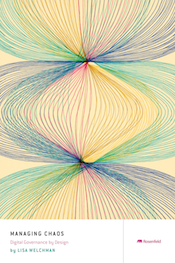Strategy: Enterprise UX Strategy
UXmatters has published 22 articles on the topic Enterprise UX Strategy.
Top 3 Trending Articles on Enterprise UX Strategy
-
The Value of Customer Journey Maps: A UX Designer’s Personal Journey
September 7, 20113 CommentsUntil recently, I never saw the value in customer journey maps. In fact, throughout my career, I’ve even struggled with the value of personas and scenarios. Many times, stakeholders would just skim over them after our presentations or use them only to prove we were making progress on a project. Design teams, with the best intentions, made every effort to keep personas alive and breathing, only to succumb to other project pressures that demanded annotation, use cases, and itemized requirements.
So why have I written an article on the value of customer journey maps? How did I manage to reach the conclusion that customer journey maps are not only a worthy and effective tool, but also a crucial element on large, enterprise user experience (UX) projects? Because I saw them have a significant impact on a recent project with The Boeing Company, and I’m now a believer.
In this article, I’ll attempt to illustrate the virtues of customer journey maps, the necessary ingredients that make them an intelligent deliverable that encourages conversation and collaboration, and the role they can play in effecting real change in large organizations. Read More
-
How to Create an Enterprise UX Strategy
December 19, 2016Something is happening in the world of enterprise software development: design and user experience are becoming integral to business success. Over the last three years, IBM has hired over 1,000 designers globally and plans to hire 500 more by 2017. Venerable heritage brands such as Sotheby’s and Christie’s have plowed money into digital acquisitions and overhauls. From the very beginning at Amazon, Jeff Bezos has invested 100 times more cash in user experience than in advertising.
The reasons for this shift toward user centricity across the business spectrum are self-evident: businesses that invest in user experience see significant increases in market share and customer retention and decreases in customer-acquisition, support, and training costs. As numerous studies have revealed, investing a dollar in user experience returns between $2 and $100. In the 1970s, IBM’s second president Thomas Watson stated, “Good design is good business.”
However, for good design to transform business outcomes, good strategy must underpin it. According to a 2015 MIT Sloan report (PDF), digital strategy drives digital maturity, and UX strategy constitutes a significant part of that maturation process. Some business trends that have contributed to the importance of UX strategy today: the gap between consumer and enterprise software is getting smaller, and businesses have become omnichannel players. Implementing a UX strategy gives businesses the chance to reimagine themselves for a new era. Read More
-
Managing Chaos: Digital Governance by Design
May 4, 2015This is a sample chapter from Lisa Welchman’s new book Managing Chaos. 2015 Rosenfeld Media.
Chapter 7: Getting It Done
 The governance framework design effort is a good opportunity for your organization’s digital stakeholders to learn how to work and collaborate better. So, even if you already have a sense of who on your digital team ought to have the authority to make decisions related to digital strategy, policy, and standards, it’s still important to go through the design effort with a larger team. Because it’s not just the end state that is important, but rather the interim conversation, collaboration, and compromise required to build your framework. Those activities will bring your team into better communication, better community, and better alignment. Read More
The governance framework design effort is a good opportunity for your organization’s digital stakeholders to learn how to work and collaborate better. So, even if you already have a sense of who on your digital team ought to have the authority to make decisions related to digital strategy, policy, and standards, it’s still important to go through the design effort with a larger team. Because it’s not just the end state that is important, but rather the interim conversation, collaboration, and compromise required to build your framework. Those activities will bring your team into better communication, better community, and better alignment. Read More
All Articles on Enterprise UX Strategy
- Review: Enterprise UX 2017, Part 2: Conference, Day 1
- Humanizing the Enterprise
- Conference Review: O’Reilly Design Conference 2016
- Are You Giving Users What They Ask For?
- How to Create an Enterprise UX Strategy
- Getting Enterprise Mobile UX Right
- Review: UX STRAT 2015, Part 3: Conference Highlights, Day 1
- A No-Compromises User Interface Rarely Gets Built
- UX Strategies Summit 2015 Review, Part 2: Day 1 of the General Summit
- Why Enterprise Product Managers Should Choose MVEs Over MVPs
- Managing Chaos: Digital Governance by Design
- What Enterprise Software Users Really Want, If They Are Candid with Themselves
- Don’t Just Manage, Transform! Part 2
- Don’t Just Manage, Transform! Part 1
- More Than Usability: The Four Elements of User Experience, Part IV
- More Than Usability: The Four Elements of User Experience, Part III
- The Value of Customer Journey Maps: A UX Designer’s Personal Journey
- Why Don’t Usability Problems Get Fixed?
- Enterprise User Experience: Building a UX Group | Hosting a Get-to-Know-UX Event
- The User Experience of Enterprise Software Matters, Part 2: Strategic User Experience
- The User Experience of Enterprise Software Matters
- The Enterprise User Experience: Bridging the IT/Marketing Divide